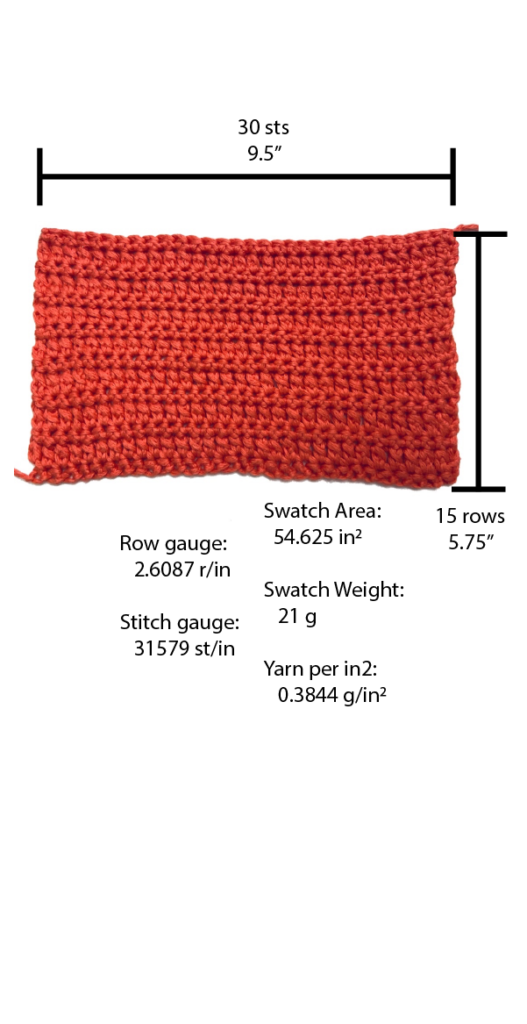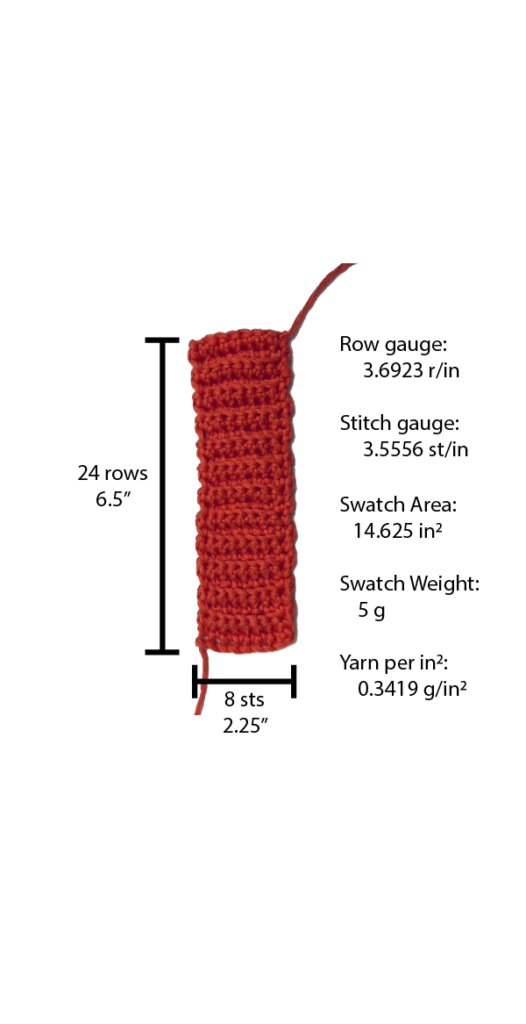The gauge is possibly the most important piece of information provided in a pattern so someone else can recreate the same fabric. Since crocheting is a handmade craft and skill, there are human variables that cannot be accounted for. Two people can have the same exact tools and step-by-step instructions, but the result will not be the same. Even the same person can create the same pattern twice and the results be slightly different. It’s one of the natural attractive qualities of handmade items, no two are identical. After deciding on my fabric and creating my official pattern swatches, some measurements and calculations were the next step.

Swatch 1: main pattern for body and sleeves 
Swatch 2: Ribbing
The yarn per inches squared will allow me to determine the amount of yarn necessary for each size of the garment without needing to create each one.
After numerous searches to find out where to learn this information, I found a comprehensive online course from Interweave by Shannon Mullet-Bowlsby. He is a crochet designer, author of multiple crochet garment pattern books, and a sought-after teacher among the fiber arts community. This course is comprehensive with the information broken down into small enough sections making the process easily understood to any aspiring crochet garment creator. I used his course for learning the necessary fundamentals for my directed project, and I follow his blog for continued learning. Still, the next step was a headache and a half. 3 pages of chicken scratches, cross outs, and calculating, finally resulted in a beautiful layout and schematic…for one size. To clarify, calculations for the straight edges wasn’t tough, but I am a kinesthetic learner and trying to figure out the shaping calculation proved difficult initially. It wasn’t a reflection on the course content. I understood what information I needed and how to complete the calculations, but I was having trouble determining what the measurements for the different components were supposed to be. I had the standard size measurements from the Standards and Guidelines for Knitting and Crocheting from The Craft Yarn Council as a guide, but certain measurements aren’t detailed or standardized since they pertain to personal fit and design, such as how wide should the shoulder seam be, or what the drop length should be for the neckline. After some frustrating attempts, I chose to utilize graph paper to help double check my work to be sure I was headed in the right direction. As you can see from the image below, I opted to use my daughter’s measurements and size for my first test run. If my math holds true for my first creation, then it’s plug and play for all further sizing.

References
Craft Yarn Council. (n.d.) Standards and Guidelines for Crochet and Knitting. https://www.craftyarncouncil.com/standards
Hoehne, J. (n.d.) Doing some homework [Photograph]. Unsplash. https://unsplash.com/photos/AZrBFoXP_3I
Mullet-Bowlsby, S. (n.d.). Crochet Garment Design [Online Course]. Interweave. https://www.interweave.com/product/crochet-garment-design-with-shannon-mullett-bowlsby/,



